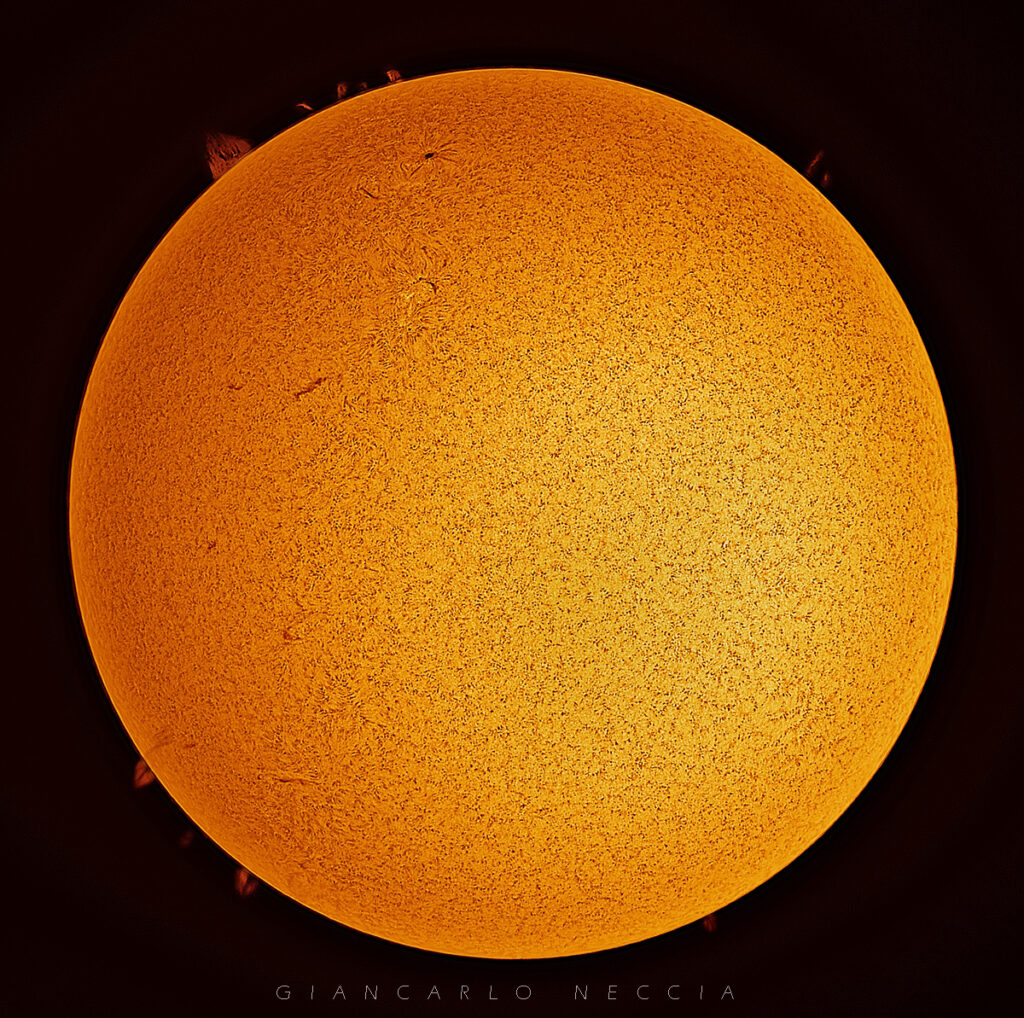
The Sun rose into the bronze sky, leaving the beautiful sea, to shine for the eternal and the mortal …. (Homer “Odyssey” Book III 1-3)
During the science class at high school, I asked my teacher where the elements of the periodic table came from. He replied that they came from the earth’s crust. Sure, that’s where we get them from, but how did they get to Earth? To know the answer we must look up to the sky and the stars.
There are only 3 original elements of the universe, hydrogen helium and lithium, everything else is forged in the hearts and among the remains of dying stars. Yes, the calcium in our bones, the iron in our blood, oxygen and everything we are made of is formed in the stars.
We are stardust, stars like the Sun, our star, our source of life. It provides us with the heat and light that allows life to proliferate, we see it rise and set every day with regularity, but if we think that our Sun is there quiet, every day the same as another, we are very wrong: it is a kind of agitated guy and it changes every hour, every minute, indeed every second.
In fact, every second more than 594 million tons of hydrogen are transformed into helium, right in the star’s core. In this transformation, the sun lightens every second by 4 million tons which are transformed into energy and heat: numbers incomprehensible to us. A datum that can serve as a term of comparison is the world production of electricity: to equal the energy produced by the Sun in one second, all the electricity production plants on our planet would have to operate for more than 4 million years.
Nuclear fusion takes place in the innermost part of the Sun, where a pressure of 500 billion atmospheres can be estimated; considering that the pressure of the gases depends on the density and the temperature, it appears that in the core the latter must be of the order of 15 million degrees centigrade.
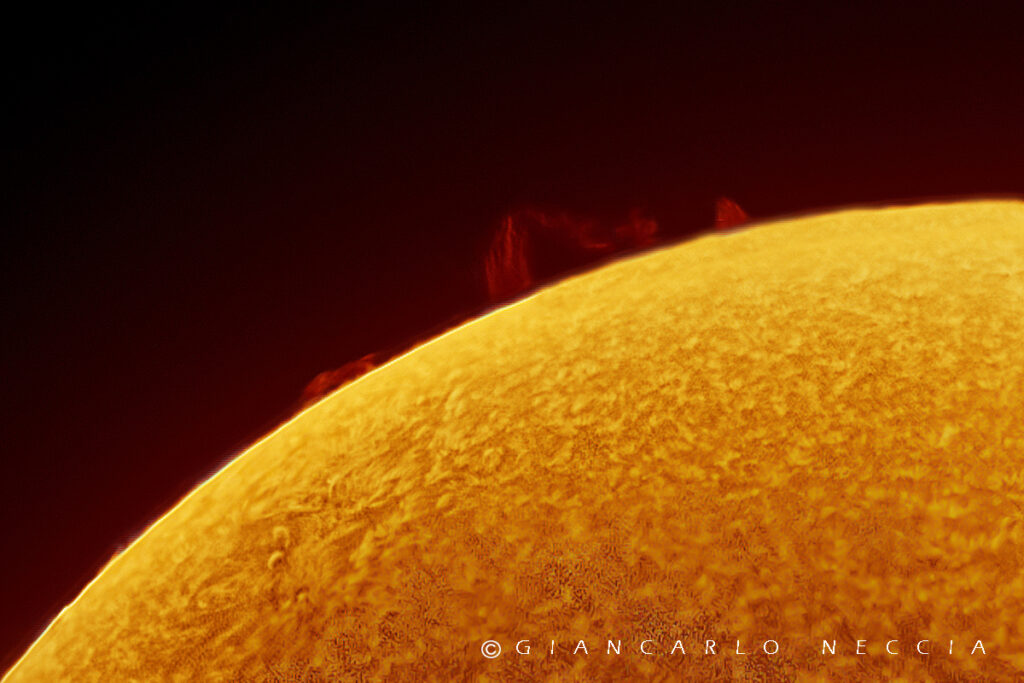
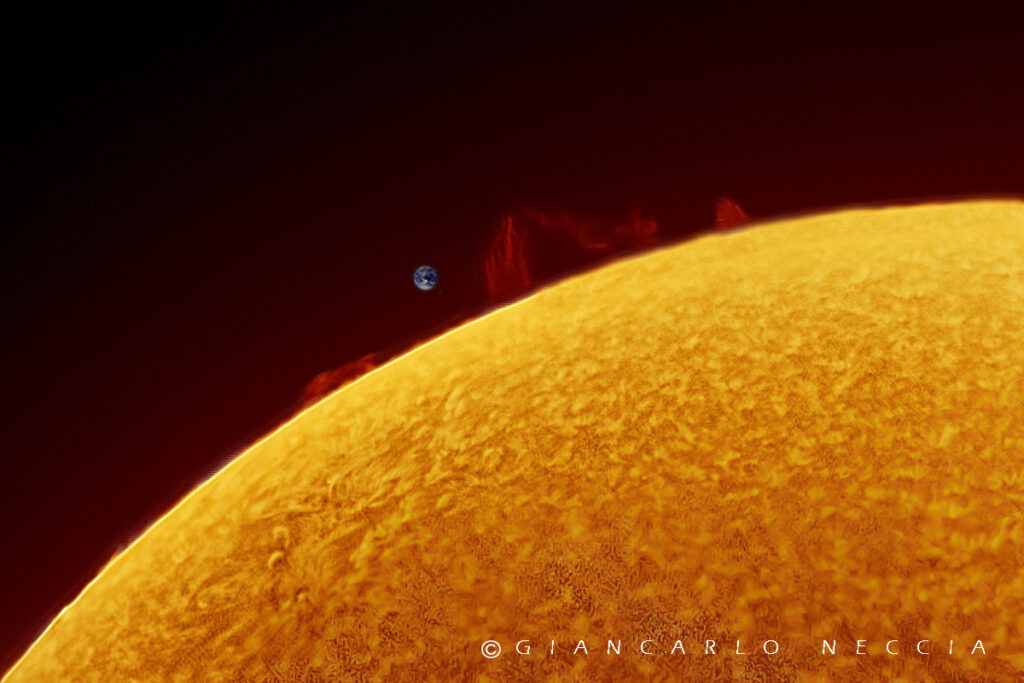
The Sun is a medium-sized star that is in its main sequence, is about 5 billion years old and has no precise boundaries, being a sphere of incandescent gas.
The hydrogen present in the furnace of the Sun is sufficient for at least another 5 billion years, after which it will be transformed entirely into helium and then the conversion of helium into carbon will begin, which in turn will be transformed into oxygen, and so on with others processes of transformation of elements, until the Sun will run out and will be destined to slowly extinguish. Don’t worry though, as we have said, it will take another 5 billion years for it to consume all its fuel, and end up as a white dwarf star surrounded by a planetary nebula.
As we have said, in the nuclear fusion of hydrogen into helium a small part of the initial mass is transformed into energy, which is emitted by the star. Starting from the core, this energy (photons) also takes 10,000 years to reach the surface of the Sun and only 8 and a half minutes to reach Earth in the form of light and heat.
In fact, light takes 8 and a half minutes to travel the 150 million kilometers that separate the sun from the earth, so when we look at the sun we always see it as it was about 8 and a half minutes before.
This is a universal law: the light has a finite speed, which can seem very high (it goes around the earth 7 times per second) or tremendously slow, so much so that when we look at some of the stars in the firmament, we see them as they were thousands of years ago; indeed, while we see them they may no longer be there! The farther we can see with our tools, the further we go back in time.
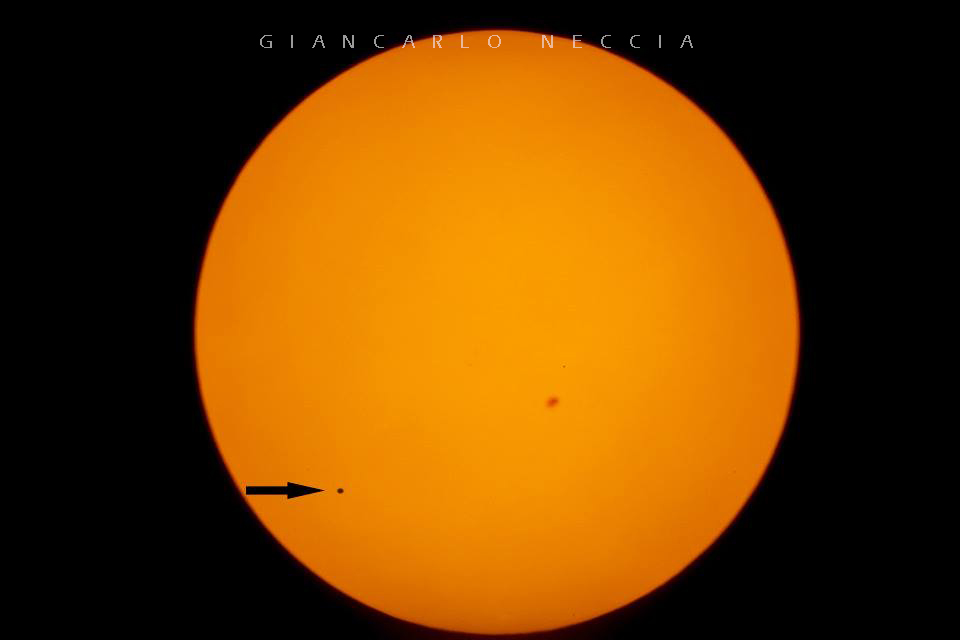
But let’s go back to the star which is about 8 light minutes away from us. The Earth, all of us, and the other planets of the solar system are immersed in its outer atmosphere, called the heliosphere. Its energy warms the oceans, creates climate dynamics, and supplies energy to plants; it is the most recognizable “object” for all forms of life.
In short, it is the Sun that allows us to exist and live.
The Sun has always fascinated man. Since the most ancient civilizations, man has always venerated the Sun, building temples because our life depends on this small star (in the galaxy there are much larger and more powerful but often live much less). Suffice it to say that when agriculture developed, men began to understand that the cycle of plants depended on the Sun and that they had to sow at specific times. They soon learned that the points where the Sun rises and sets change during the year and reach two extremes at the winter and summer solstices, then reverse direction and come back.
The Sun is a star and its functioning is well known today, so much so that we know its age and destiny. However, there are still some open questions. We know that the outer solar corona is much hotter than the surface’s 6,000 degrees Celsius, but we don’t know why. Some probes have been sent to study the solar wind well and closely, i.e. those particles that reach us and which, by interacting with the Earth’s magnetic field, give rise to one of the most incredible spectacles visible in our sky: the Polar Auroras. When we see the auroras we are seeing the effects of solar particles on our ionosphere. Another great show that the Sun reserves us, this time with the help of our travel companion, the Moon, are the eclipses.
Total solar eclipses are strikingly beautiful, almost disturbing, especially when viewed live. Suddenly in the sky the Sun disappears, leaving us in the dark for a few minutes and then reappearing like a diamond ring.
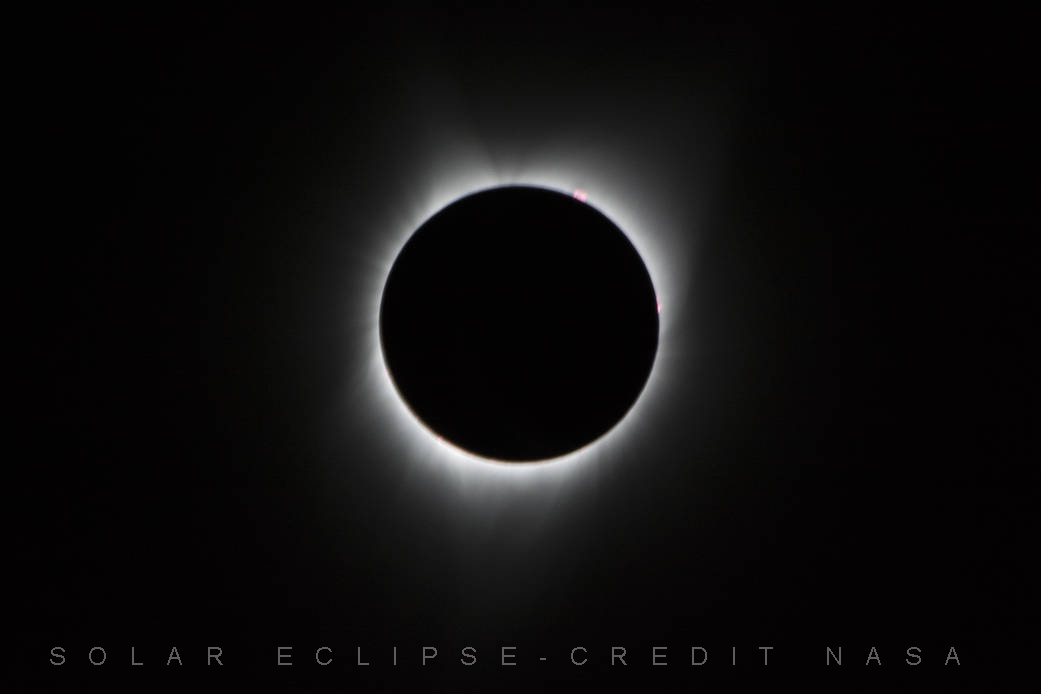
Our star also performs in another interpretation much more familiar to us as it offers it to us regularly every day: sunset. Always a source of inspiration for many artists, poets, painters and writers, the warm light of the sunset gives us intimacy and serenity, it is as if the sun painted the sky before setting to show us the other stars.
The Sun in numbers:
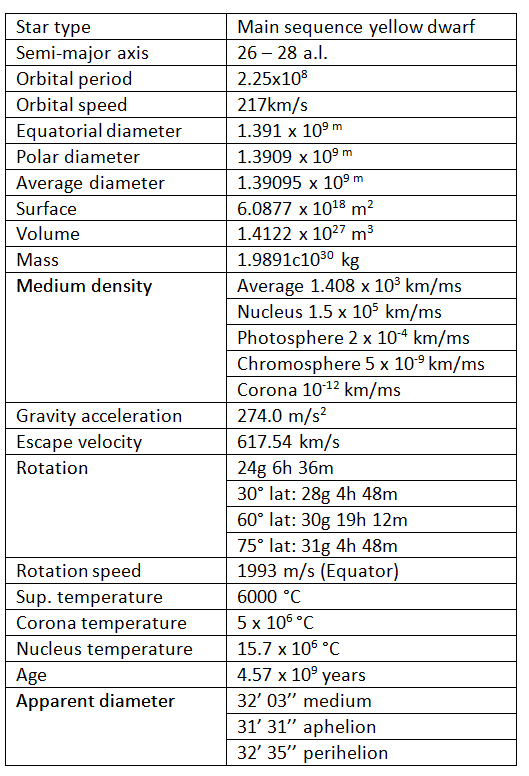
Credits
Author: Giancarlo Neccia is an amateur astronomer and astrophotographer of the “La via delle Stelle” association of which he is vice president. He is the technical manager of the “La via delle stelle” observatory in Montelanico (Rome) and the Maurizio Cassandra observatory in Carpineto Romano (Rome) equipped with a 400 mm Marcon telescope.
Translation by Maria Antonietta Sessa


